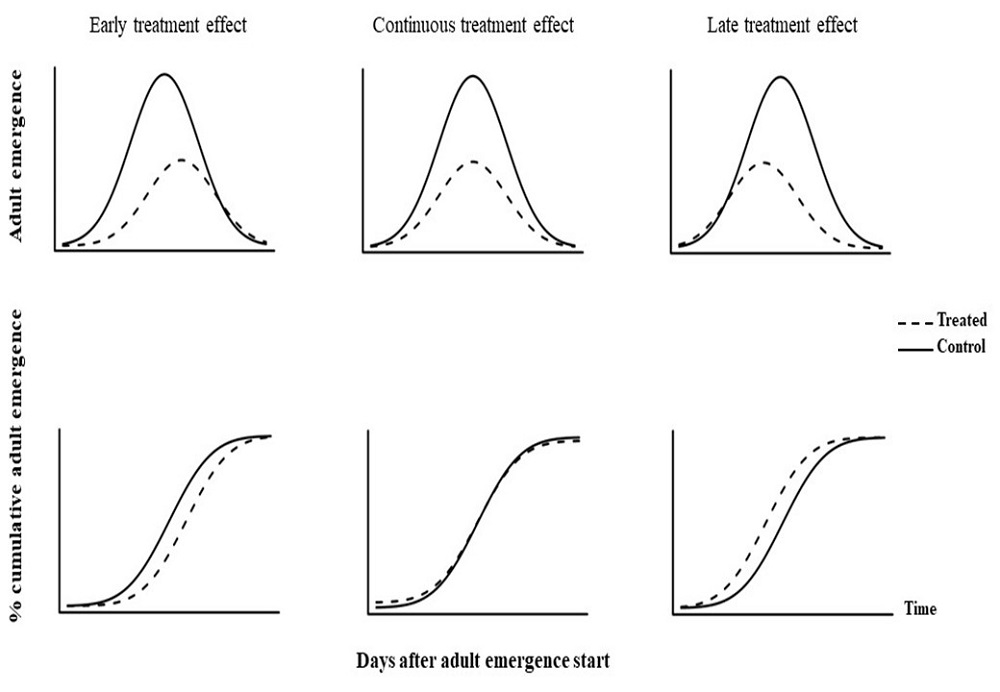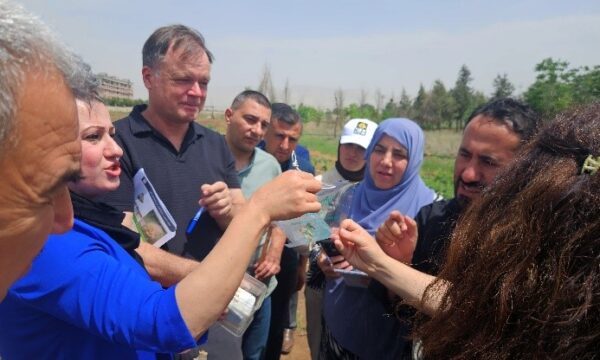
Negative results, such as the failure of detecting factorial effects, are often not published. This is due to humans’ positive test bias trying to prove rather to reject their hypothesis.
Or it might be due to humans’ confirmation bias trying to confirm previous results from the science community. However, the opposite of such results is often not published. Consequently, researchers may try to investigate the same hypothesis again and again.
The western corn rootworm, (Diabrotica virgifera virgifera), is one of the most destructive pests of maize in North America and Europe. The larvae of this leaf beetle feed on maize roots, often causing entire plants to bend (lodge). Adult beetles can reduce yields through intensive silk feeding, which interferes with maize pollination.
Despite decades of studies and despite numerous control options and pest management products, the insect remains difficult to control. Chemical and biological control of its larvae is often variable when it comes to real-time farming conditions.
A recent paper published by a PhD student of CABI and the Szent Istvan University of Godollo – ‘Missing temporal effects of soil insecticides and entomopathogenic nematodes in reducing the maize pest Diabrotica virgifera virgifera’ – proves how difficult it is to detected reasons behind problems with pest management products. The paper, published in the Journal of Pest Science, also shows how valuable such information can be if published.

Szabolcs Toth and co-authors could not prove their hypothesis that soil insecticides lose and beneficial nematodes may increase their efficacy in soil pest control with time during the pest control target period.
Despite analyses of CABI`s large data set from 12 Hungarian field trials over 7 years, the time during the pest control period in a cropping season after treatment seemed to have played a minor role in soil insect pest control under realistic open field conditions.
Astonishingly this paper, published in early 2020, was among the 10 most downloaded papers from the journal at more than 1,100 times. The Journal of Pest Science is a high ranked journal in the area of pest management, currently with an impact factor of 4.5.
The PhD student’s supervisors, Dr Stefan Toepfer and Dr Mark Szalai said, “We believe the impact of this paper lays in the appreciation of researchers in results showing them which research may not need further investigation, or it may confirm their own but unpublished results.”
Mr Toth’s PhD project is being financed by the Hungarian State PhD-Scholarship program. Many of the trials, that led to the large data set, have been financed by the LTZ Baden-Wuerttemberg and the LfL Bavaria of Germany.
Valeriana Ramondo, Publishing Editor of the Journal of Pest Science, in informing the scientists of the paper’s download success, said, “On behalf of the Editors-in-Chief, I am glad to inform you that your article reported below attracted great interest among our readers, and it was listed among the top-10 most downloaded papers in 2020. Since we feel that a journal can only be as good as its authors’ contributions, we thank you and your collaborators for having contributed so incisively.”
Additional information
Main image: The Toth et. al paper is among the top 10 downloaded from the Journal of Pest Science in 2020.
Full paper reference
Toth, S., Szalai, M., Kiss, J. et al. Missing temporal effects of soil insecticides and entomopathogenic nematodes in reducing the maize pest Diabrotica virgifera virgifera. J Pest Sci 93, 767–781 (2020). https://doi.org/10.1007/s10340-019-01185-7
Relevant book
Western Corn Rootworm: Ecology and Management, Edited by S Vidal, Georg-August University, Goettingen, Germany, U Kuhlmann, CABI Bioscience, Switzerland, C Edwards, Purdue University, W Lafayette, Indiana, USA – CABI, 2004.
Project
Dr Toepfer is supporting research investigating beneficial nematodes to control rootworms in European maize production. Find out more here.
CABI is also a service provider for Diabrotica research. Find out more here.
Related News & Blogs
Biological control in action: Zambia’s field days on fighting fall armyworm
Experts from CABI recently held two field days and an expo in Zambia, showcasing innovative approaches to pest management to 584 farmers, agro-dealers and other stakeholders to help raise awareness of approaches to tackle the invasive fall armyworm (Sp…
11 June 2025




